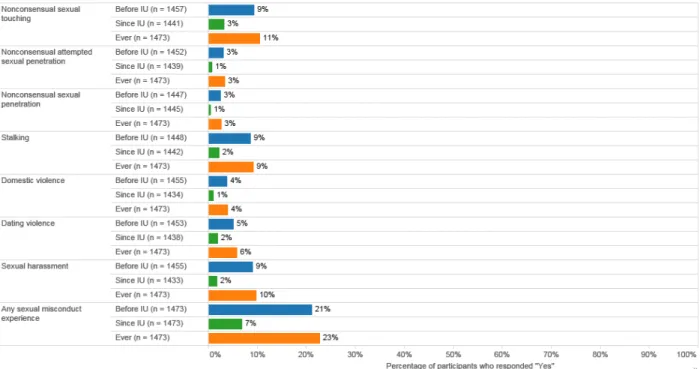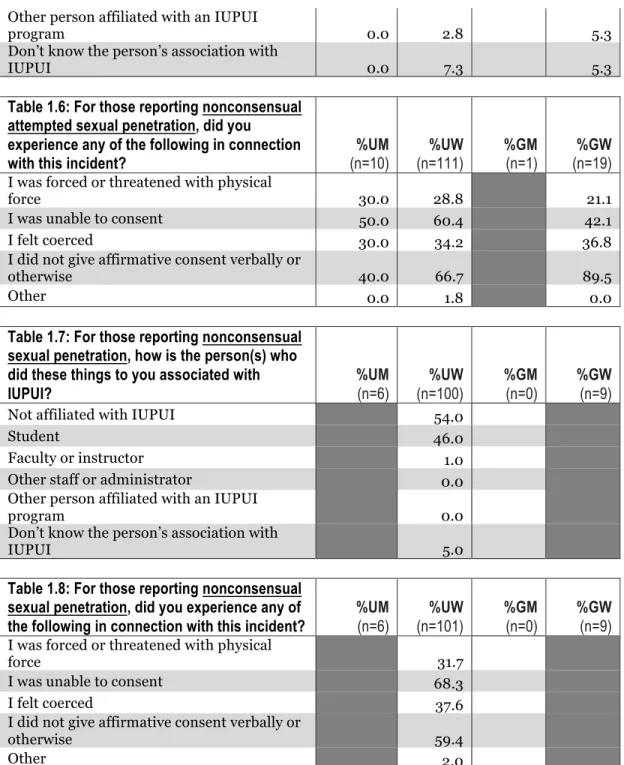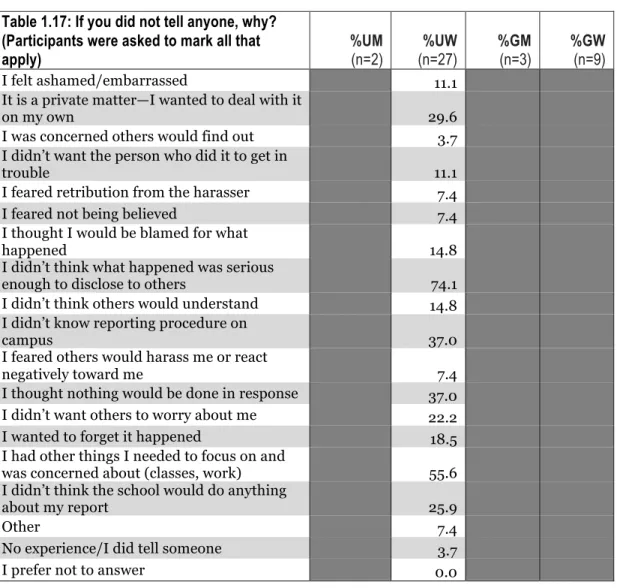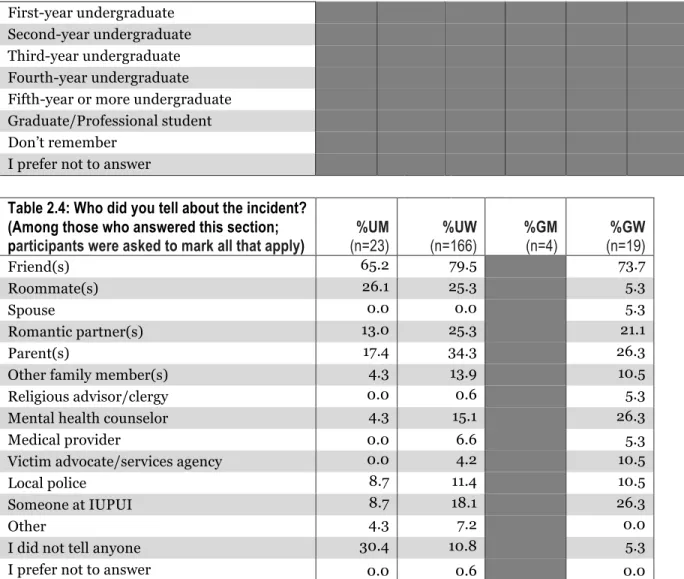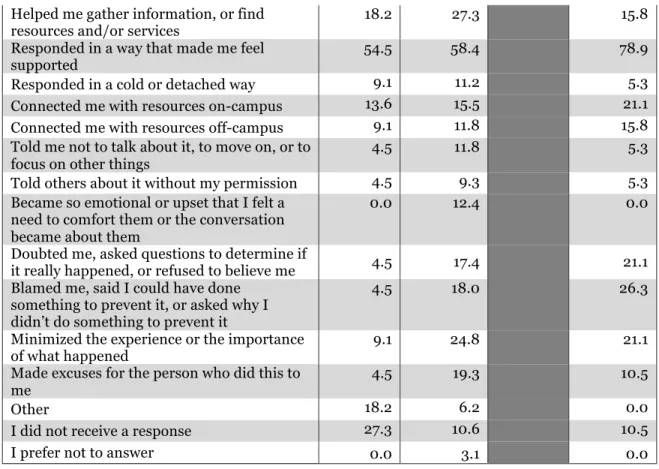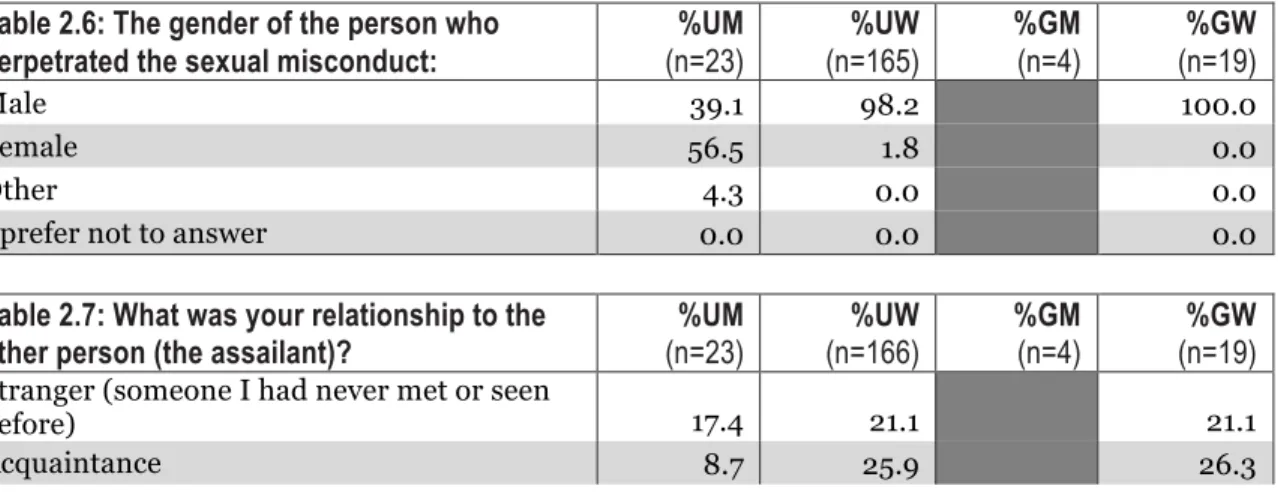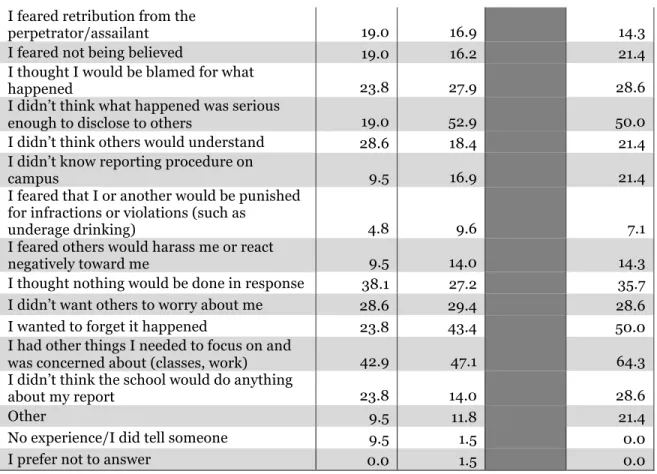This total represents approximately 21 percent of the total student population on campus, excluding School of Medicine students. This may be related to the fact that the students reported that nearly 40 percent of the attackers believed to have no connection to the university, or their connection to the university was not known. The findings suggest that the motivation of students to seek help from the university will vary and may be related to their perception of the university.
It should be noted that, as with any voluntary study, the data collected and presented in this report reflect only the participants who responded and participated in the survey. Response bias is expected, given the sensitive nature of the topic and the specific focus on sexual violence. Therefore, the data cannot be understood as a complete representation of the experiences of undergraduate and graduate students at IUPUI.
Below and on the following pages, we report complete findings from Indiana University–Purdue University Indianapolis' sexual misconduct campus climate survey, including highlights of the data and analysis as well as tables and graphs that record student participants' responses to specific survey questions. 4 identified as "GM." Participants were given the option to select "I prefer not to answer" in many sections of the survey due to the sensitive nature of the topic.
Sexual Misconduct Experiences
Student Attitudes, Beliefs, and Educational Experiences
Engagement in Sexual Misconduct Prevention
The “n” in the tables indicates the number of participants who responded to the question. Ø Female participants reported being more likely to agree that sexual misconduct is a problem on the IUPUI campus (UM 14%; UW 22%; GM 14%; GW 15%). Ø Among participants who reported witnessing a situation that they believed was or could have resulted in an assault, participants most often reported asking the person who appeared to be in danger if they needed help (UM 49%; UW 51%, GM 47%, GW 48%).
Ø Participants across all genders and grade levels reported high levels of confidence in expressing concern when someone says that rape victims are to blame for the rape and that they would help someone under the influence of alcohol or drugs to get out of a potentially dangerous situation. vulnerable in a safe place. The “N” reported in the tables indicates the number of participants who answered the question. I am planning to learn more about. the problem of sexual violence on campus. volunteered my time on projects focused on ending sexual violence on campus or in my community.
Since becoming a student at IUPUI, I have had another student tell me that they were. observed a situation that I believe was or could be. observed a situation that I believe was or could be. observed a situation that I believe was, or could have led to, a sexual assault: "No." situation that you thought was or could have led to a sexual assault, what did you do. I created a distraction to get one or more of the people to disengage from the situation. Participants who reported that they did something “Other” when they witnessed a situation that they believed was or could have led to a sexual assault were asked to describe what they did.
Participants who reported witnessing a situation that they believe was or could have resulted in a sexual assault and decided not to take action were asked to share the reasons why they decided not to respond to the situation they witnessed.
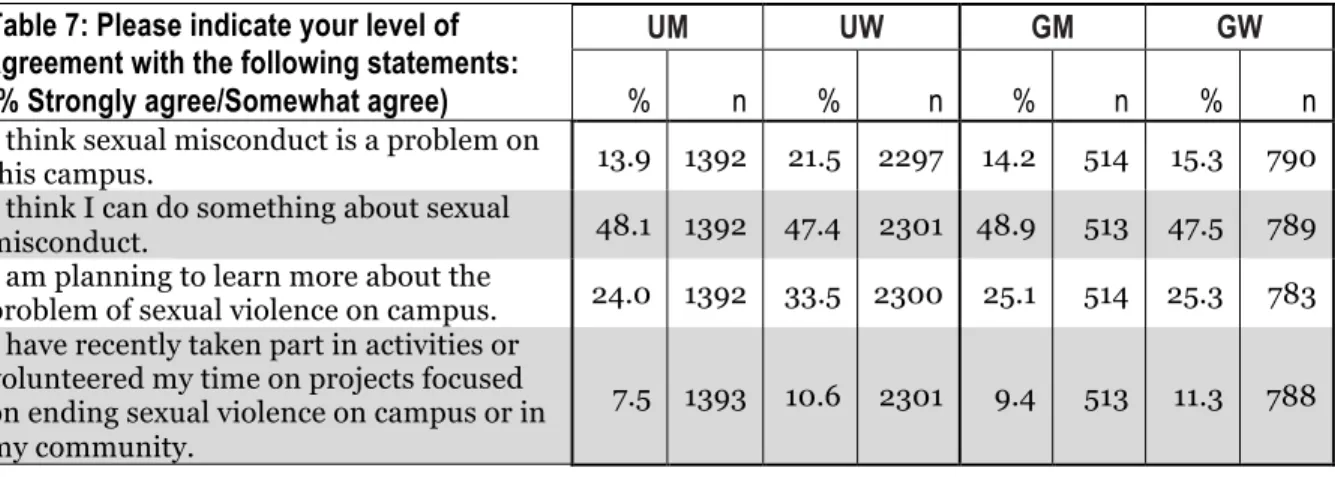
Implications of Findings
See table 4.1) Furthermore, male graduates. demonstrated a lower level of awareness of consent dynamics than other groups. See Table 5.2) Examination of programs available to graduate students and professionals will be necessary, with the possibility of more focused consent programming with graduate men. Of the approximately 5 percent of participants who had attended a campus bystander intervention training program, 77 percent of men and 83 percent of women found it helpful.
This supports the premise that when bystander intervention training is available, students tend to find value in applying the skills learned to their Data were collected over the Internet through the Indiana University Center for Survey Research (csr.indiana.edu), a research center under the Office of the Vice Provost for Research (OVPR) at IU Bloomington. The total survey contained 146 questions, but participants may have received fewer questions due to the skip logic of the questionnaire.
Financial support for the incentives and data analysis was provided by the Office of the Chancellor. For purposes of data analysis, only those participants who indicated that they were an undergraduate student (all ages) or graduate student (all ages) and were enrolled either full-time or part-time at the time of the survey are included in the analysis presented . here. The total number of participants represented in this report is 5,300, representing 21 percent of the total campus population, excluding School of Medicine students.
Participants who identified as transgender or with other gender categories make up 1 percent of the sample population and are therefore not included in the current analyzes due to the small sample size and careful consideration to include only non-identifiable data in this report. The data shared in this report reflects only the students who chose to participate in the study and therefore may not be an accurate reflection of all students' experiences, attitudes and knowledge on this topic. Given the sensitive nature of the survey, information about campus resources was provided by the survey with reference to Indiana University's sexual misconduct information website.
A trigger warning was provided on the information page to inform participants of the sensitivity of the survey, and campus resources were provided to all participants who completed the survey. The role of alcohol or drugs in sexual violence for college students, by men and women. Which of the following substances did you (the victim) or the other person (the perpetrator) consume?
Alcohol and consent for graduate students, for men and women Please indicate your level of agreement with the following statements. Bystander Trust for Graduate Students, Male and Female Please place your trust on.
